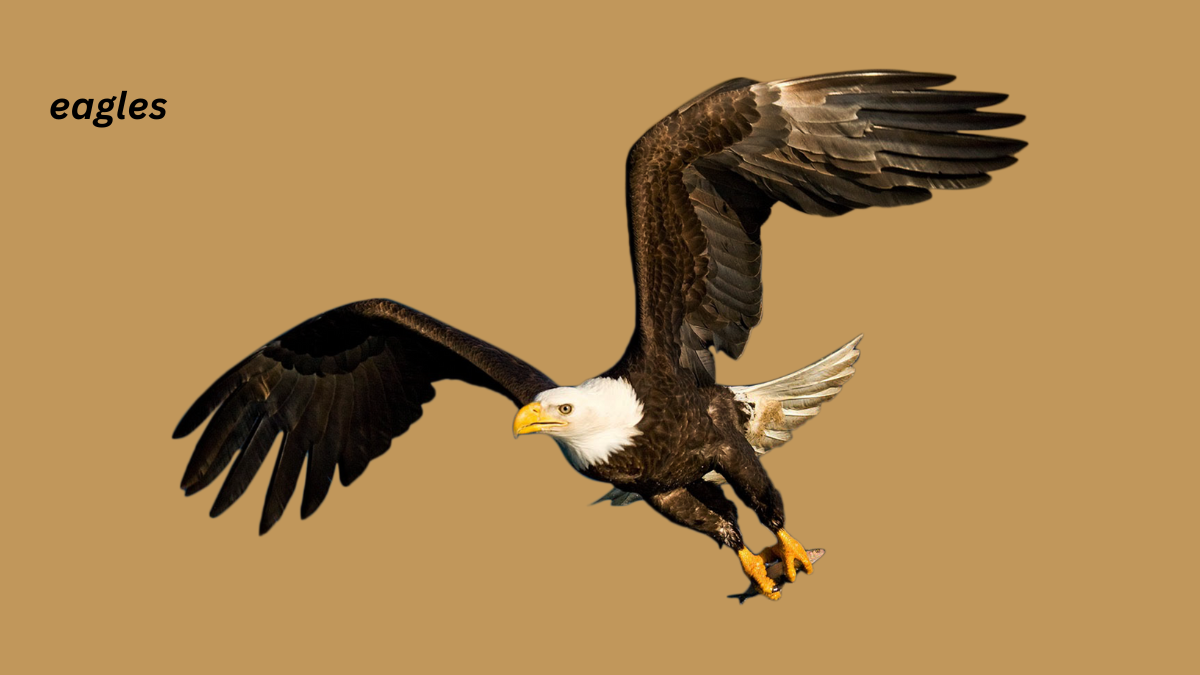The Majestic Eagles: Masters of the Skies
Eagles are among the most revered birds in the world, celebrated for their power, vision, and grace. They belong to the family Accipitridae, which includes other birds of prey such as hawks and vultures. With over 60 species found across the globe, eagles have earned their place as iconic symbols of strength and freedom in many cultures. This article explores their fascinating characteristics, habitats, and the unique adaptations that make them such formidable predators.
1. Physical Characteristics: Built for Power
Eagles are large birds with impressive wingspans that can reach up to 7.5 feet, depending on the species. Their powerful bodies, sharp talons, and hooked beaks make them adept hunters. One of their most notable features is their exceptional eyesight. Some species, like the bald eagle, can spot prey from more than two miles away. This keen vision, combined with their strength, allows them to hunt efficiently from great heights.
2. Habitat and Distribution
Eagles are found on every continent except Antarctica, thriving in diverse environments ranging from forests and mountains to coastal regions and deserts. While some species, like the bald eagle, prefer habitats near large bodies of water where fish are plentiful, others, like the golden eagle, are more versatile, occupying open landscapes and mountainous areas. Their ability to adapt to different ecosystems has allowed them to inhabit a wide range of climates and geographical regions.
3. Diet: Apex Predators
Eagles are at the top of the food chain and have few natural predators. Most species are carnivorous, feeding on fish, small mammals, and even other birds. For example, the bald eagle primarily feeds on fish, using its sharp talons to snatch prey from the water. The harpy eagle, one of the largest and most powerful species, hunts monkeys and sloths in the dense rainforests of Central and South America. Their hunting techniques vary, but they all share the ability to swoop down from great heights with incredible speed and precision.
4. Reproduction and Lifespan
Eagles are monogamous, often mating for life. During the breeding season, they build large nests, known as eyries, in high, inaccessible places like cliffs or tall trees. These nests are massive, with some measuring up to 10 feet in diameter and weighing over a ton. Eagles usually lay between one to three eggs, and both parents take turns incubating them. Once hatched, the eaglets are cared for by both parents until they are ready to fledge, which typically occurs after about 10 to 12 weeks.
Eagles have long lifespans, with some species living up to 30 years in the wild. In captivity, they can live even longer, sometimes exceeding 50 years. Their longevity, combined with their slow reproductive rate, makes them vulnerable to environmental changes and human activities.
5. Cultural Significance: Symbols of Power and Freedom
Throughout history, eagles have been revered by various cultures. In ancient Rome, the eagle was a symbol of power and was used as the emblem of the Roman legions. Native American tribes see the eagle as a sacred messenger between the physical and spiritual worlds, with eagle feathers used in important rituals and ceremonies. In modern times, the bald eagle has become a symbol of freedom and strength, serving as the national bird and emblem of the United States.
6. Conservation Efforts
Despite their powerful presence, many eagle species have faced threats from habitat destruction, hunting, and environmental pollution. In the mid-20th century, the bald eagle population in the U.S. was severely threatened due to the widespread use of the pesticide DDT, which weakened their eggshells. Thanks to concerted conservation efforts, including legal protection and habitat restoration, the bald eagle has made a remarkable recovery and was removed from the Endangered Species list in 2007.
However, other eagle species remain vulnerable. The Philippine eagle, for example, is critically endangered, with only a few hundred individuals remaining due to deforestation and hunting. Continued efforts are needed to protect these majestic birds and ensure their survival for future generations.
7. Unique Species of Eagles
While all eagles share common traits, some species stand out for their unique characteristics:
- Bald Eagle (Haliaeetus leucocephalus): Known for its distinctive white head and tail, the bald eagle is one of the most recognizable eagle species and serves as a symbol of the United States.
- Golden Eagle (Aquila chrysaetos): This powerful bird is one of the largest eagles in the Northern Hemisphere and is revered for its strength and agility in hunting.
- Harpy Eagle (Harpia harpyja): Native to Central and South America, the harpy eagle is one of the heaviest and most powerful raptors, known for hunting large mammals like monkeys and sloths.
- Philippine Eagle (Pithecophaga jefferyi): Often referred to as the “Monkey-eating Eagle,” this critically endangered species is endemic to the Philippines and is one of the largest and rarest birds of prey in the world.
8. Conclusion: The Enduring Legacy of Eagles
Eagles are among the most awe-inspiring birds in the world, embodying the ideals of strength, freedom, and majesty. Whether soaring through the skies or perched high in their nests, they continue to capture the human imagination. As apex predators, they play a crucial role in maintaining the balance of their ecosystems, and their survival is vital to the health of the natural world. Through continued conservation efforts, we can help ensure that future generations will witness the splendor of eagles in the wild.
